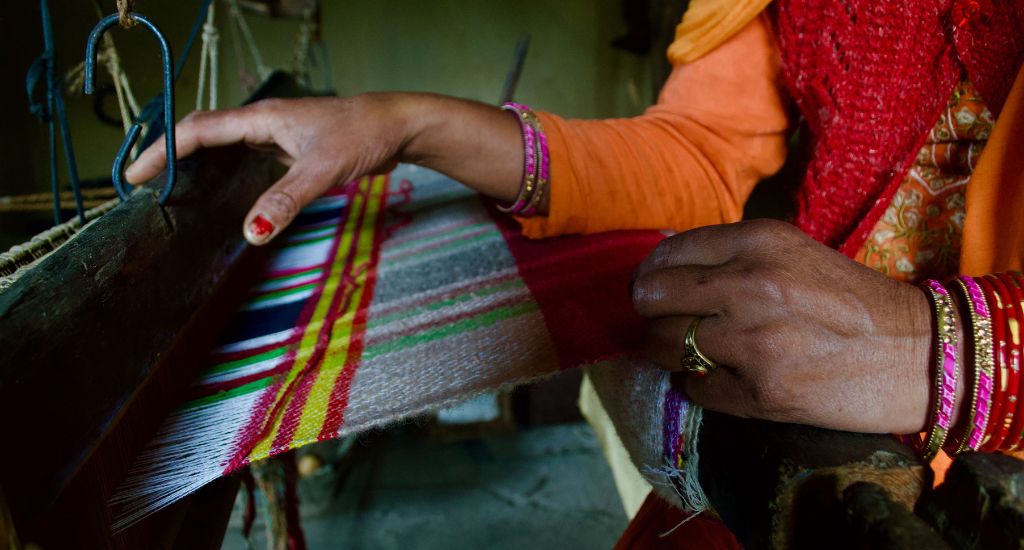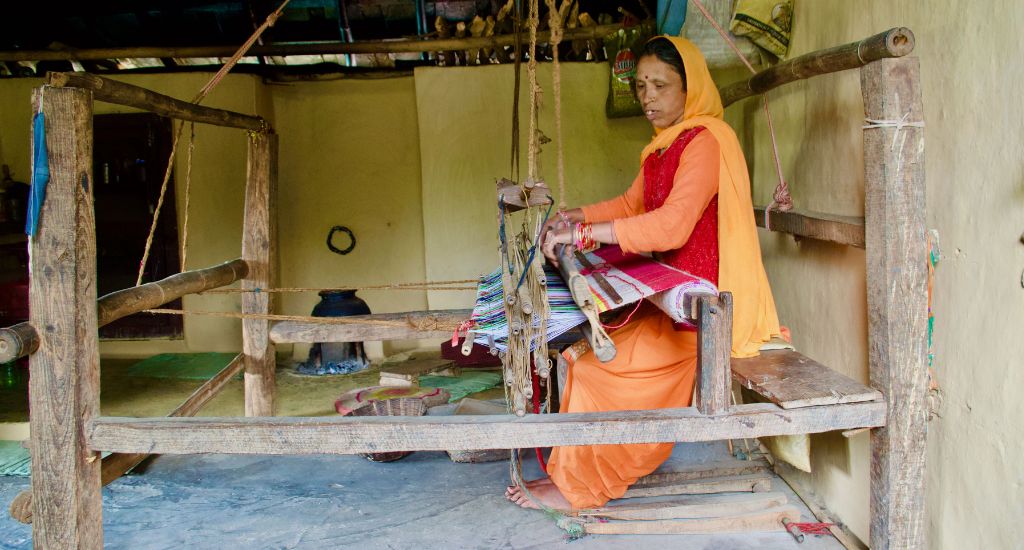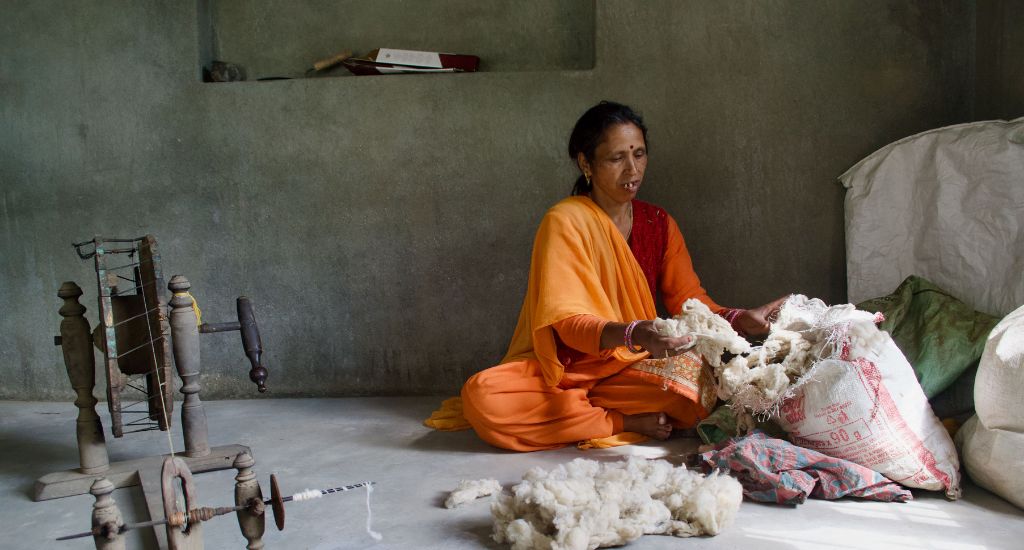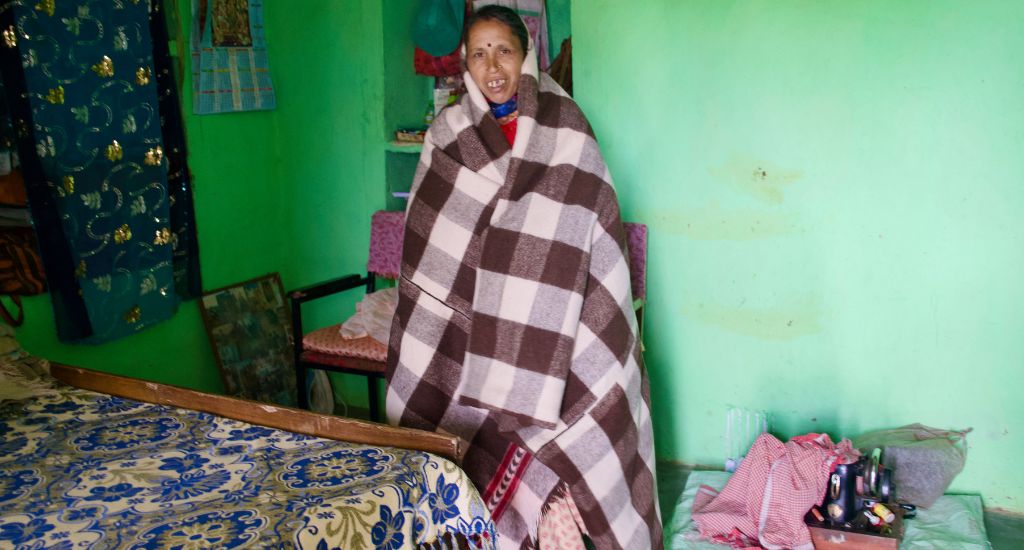
The warm homespun blanket of Gaddi tribe is going cold
The small Gaddi tribe’s tradition of handloom weaving is slowly disappearing from Himachal Pradesh as fewer people are interested in the laborious process.

The small Gaddi tribe’s tradition of handloom weaving is slowly disappearing from Himachal Pradesh as fewer people are interested in the laborious process.
Rekha Devi’s ancestors roamed the mountains and meadows of the Dhauladhar range in the Himalayas for centuries – trusting their handwoven “gardu” blanket to keep them warm as they moved in search of greener pastures for their goats and sheep.
The Gaddi tribe of 50-year-old Rekha Devi had long abandoned its semi-nomadic and pastoral life, settling down in villages of Himachal Pradesh and taking up farming. Some still rear livestock and the women and men weave beautiful gardus – two traditional trades fast disappearing from their lives as modern creature comforts take hold of the tribespeople.
Rekha Devi lives in Kandbari of Kangra district, which has grown into a hill station with the majestic, snow-capped peaks of the Dhauladhar towering above it. In this small township, dozens of wooden shuttle looms hum in the hands of gardu weavers.
In her home, she sits hunched over a handloom, painstakingly weaving a gardu for a neighbour who had given her the yarn – not wool, but a synthetic fibre.
She pulls out a woollen gardu and wraps it around her from head to toe in an impromptu demonstration of how the blanket protects from rain and cold.
Also Read | Community college helps tribal women pursue vocational education

“The water leaches through a synthetic blanket. But our woollen blankets are woven so tight that they are almost leak-proof. You stay warm when you take out the animals to graze,” she said.
Rekha Devi and her husband are doting parents of their three daughters and a son. Most of her waking hours are taken up by household chores, tending the crops, gathering grass for the cows – sparing little time for the loom.
“This rach (loom) and I are about the same age. Those days, we collected wood from the forest and handcrafted our looms. I learned weaving from my parents. This was their livelihood. I was taken off school in class 5 to help at home,” she said, wondering where she could have been had she completed her school education.
The hint of sadness in her remarks springs from poor demand and low returns her trade fetches – incompatible with the labour that goes into making a single blanket, shawl or jacket. Many have moved to other trades or professions.
“It will take eight hours to make this blanket. I will get Rs 300. If I have to do the whole process from scratch, which depends on what the client wants, it will take me about a week to make a gardu. I will charge about Rs 7,000 for that. If someone wants a jacket, I charge about Rs 2,000. I make sweaters, shawls, and other items as well,” Rekha Devi said.

The process is labour-intensive and slow, involving many steps, starting with collecting sheared shaggy sheep wool from other Gaddi community members.
Also Read | Traditional handloom weaves a comeback in Kachchh
“I don’t have any sheep or goats. Many people have stopped keeping them now. They don’t want to walk the jungles anymore with their herd. That’s very tough. So, I buy wool from others. They clean the wool a bit, but I clean it again,” she said.
One gardu blanket requires about 8kg of wool. Rekha Devi spins the cleaned wool into threads, which takes many, many hours on a charkha, “the spinning wheel that Mahatma Gandhiji used”.
Weaving is disappearing from our community. Children aren’t interested. They want to go to school, get jobs, and have phones
The homespun yarn is then dyed, if required, and put on the loom. Rekha Devi’s hands and feet work in tandem as she works the loom and weaves distinctive patterns from a template. “I wish I had more time to weave,” she said.
Her neighbour, 35-year-old Muna, is hard-pressed for time too. He is a bus driver ferrying students for a local school and doubles up as its odd-jobs guy.

He learned the Gaddi craft at a young age from his mother.
“I used to watch her and then try to do the same movements myself. But now I have a full-time job, and I’m a farmer. There’s not much time to make things. I might be able to make one blanket a year,” Muna said.
As growing numbers of children now complete education and work in modern professions, the years-old Gaddi traditions risk vanishing into the history books. Weaving occupies a particularly precarious place as it is met with a disinterested shrug from youngsters.
“Weaving is disappearing from our community. Children aren’t interested. They want to go to school, get jobs, and have phones. Many people have migrated to cities to work. Things have changed. Thirty years ago, hardly any had an office job. We all farmed and raised animals,” Muna said.
For generations, the Gaddi people have passed down the ancient craft as a symbol of their pride. Rekha Devi wants the skill preserved, but none of her four children has any patience for it. “They are busy with school and other chores, and they find the blankets itchy.”
Also Read | Kanha women make school fun for tribal kids
The lead image at the top close-up of the blanket commissioned to Rekha Devi (Photo by Sweta Daga)
Sweta Daga is a freelance photojournalist based in Bangalore. She reports on the intersection of climate and livelihoods/gender.